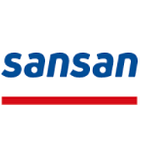How to Scan Business Cards into Salesforce [and Stop Manual Data Entry] — Scan to Salesforce
When you enter business card data into the Sales Cloud it enhances current Contacts and Leads or creates new ones. So, how do you get your business cards into the Salesforce CRM (or Pardot) and start getting much better data, leads, and sales?
The best way to put contact data into Salesforce is scanning. And it’s really quite easy and inexpensive to scan your business cards and upload them, and do it with a secure and trustworthy app.
Scanning has become so much faster, more secure, and just a lot easier. So then why do the majority of businesspeople still enter business cards via…
- Manual entry: Contacts from each card are typed in one-by-one, by yourself or an assistant directly into Salesforce. Even the best typists usually make some typos.
- Excel (or other) spreadsheet: Card information is put in a spreadsheet, saved as a .csv file, and then uploaded to Salesforce. The spreadsheet itself is from manual entry; i.e., typos.
They’re stunningly analog rituals in a digital world. It’s human to fear change, but, manual enterers, change you must. We’ve made it painless for you, and your data will benefit big time.
Business cards have almost guaranteed 100% accurate data and details — first-party data, waiting to be sold and marketed to.
Here’s how easy business card scanning into Salesforce can be.
Choose an optimized app for your org
Assuming you’ve got your iPhone or Android handy, you’ll need a business card scanning app that integrates with Salesforce. Only a few are dedicated to this task. Being in AppExchange is an absolute must, because this implies Salesforce’s approval.
Scan to Salesforce ticks all the boxes and it’s very easy to put in place.
Starting is a quick two-step process. Your Salesforce organization admin downloads the setup up from AppExchange.
Here’s how to quickly get set up and get going with scanning business cards into Salesforce in your org
The admin can test it in a sandbox environment before taking it live. ( Here’s how to create a sandbox.)
When it’s ready to go live in the organization, the admin, HR, or whoever is adding the app to the suite of company apps just has to send a simple announcement. We made a template intro you can adjust for that.
Then the individual users download the app for their phone.
Gather and prepare cards for scanning
This is the product of your hard work.
Get the business cards. Get them at trade shows, in meetings, when recruiting, from anyone you meet.
For data exchange, business cards are preferable to connecting on LinkedIn because they typically give the full name, job title, address, URL, as well as the socials. But yes, connect on LinkedIn too, if you use it (many still don’t).
If you’re meeting online on Zoom, Skype, etc, you can still swap online cards or vCard data.
Then get your cards together. Group them according to where you got them, regions, languages, whatever works for you.
Remove any staples. Don’t worry about handwritten notes (those can be accommodated with the right app).
All set? Time to put your scanning app to good use.
Scan business card contacts with your app
It shouldn’t take too much arm-twisting to convince your sales team that they’ll be happier scanning cards vs. typing them in.
If they’re Rolodex types, the bigger hurdle may be getting them to enter the cards into Salesforce in the first place.
How to scan:
- Lay the card on a flat surface, ideally with a solid and contrasting background.
- With Scan to Salesforce, you can set out up to four cards and scan them at once.
- Scan them through the app’s UI.
- Clean up the data (if necessary) and add any notes, context possible via the app.
- Upload them to Salesforce and assign them as Leads or Accounts. You can also put Leads in your Pardot campaigns.
What makes a good scan?
The magic letters here are OCR, which stands for optical character recognition. This is the technology that recognizes and processes characters and images, and then converts them to accurate data.
Ideally, you need 99%+ scanning accuracy.
We’ve been developing ours at Sansan for a decade now, so it’s as robust as a good espresso. It recognizes 16 languages and it can validate data and tell the difference between, for example, parts of an address.
Cheap OCR can be recognized by poor transcription with lots of errors, and by lumping all the data in a limited number of fields. That creates more work for you. Not good.
Upload
The best apps are fully optimized for Salesforce. Just click and upload. Ideally, you’ll also be able to use his process to dedupe and refine your data, which we’ll get to in another article.
Originally published at https://www.scantosalesforce.com on August 26, 2020.
